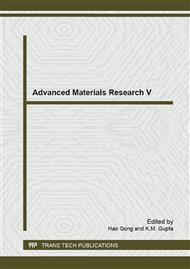p.320
p.325
p.331
p.335
p.339
p.346
p.355
p.361
p.365
Improvement and Control of Cement Slurry Formulation Resistant to the Critical Conditions HPHT
Abstract:
The ambition of the world oil industry is currently directed toward the deepest traps of oil and gas, despite the very high temperatures. The objective of this study is to improve and control a conventional formulation of cement slurry that meets the critical conditions during the cementing of 7" liner on high pressure/high temperature (HPHT) gas well at 5570m depth, located at Hassi Berkine in the southern Algeria. Under the influence of high temperature, the characteristics of the cement slurry changed. We carried out several tests on various samples in order to revise the design by using equivalent substitutions of the additives to obtain a better profile. The use of a new, very powerful, synthetic retarder (SR-31L) instead of liquid, modified sodium lignosulfonate (R-15 L) led us to obtain a significant thickening time but decreased the rheological properties as well as fluid loss and free water. We also provided a gas block by introducing latex-styrene-butadiene with a specific stabilizer (LS-1) in combination with a compatible bonding agent (amorphous silica) in aqueous suspension (BA-58L). The study determined one of the best cement slurry designs practicable on different down-hole applications in HPHT wells.
Info:
Periodical:
Pages:
339-345
Citation:
Online since:
May 2015
Authors:
Keywords:
Price:
Сopyright:
© 2015 Trans Tech Publications Ltd. All Rights Reserved
Share:
Citation:


